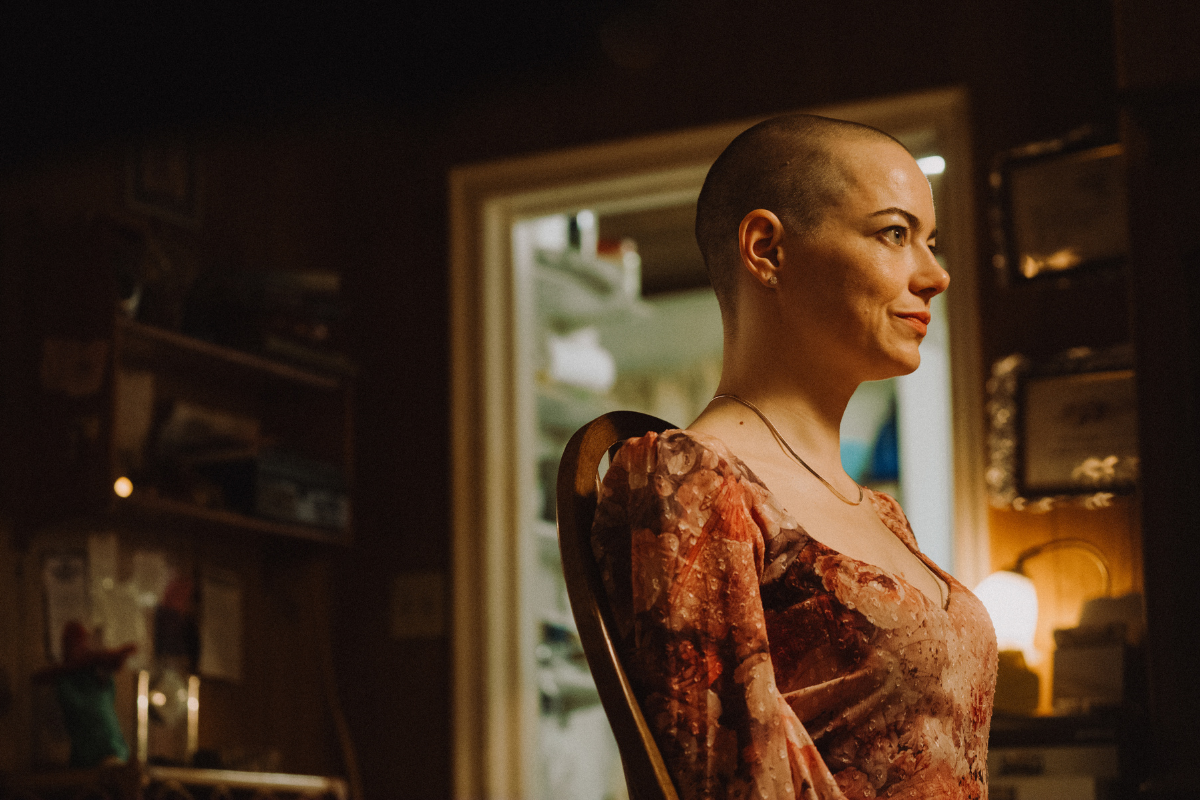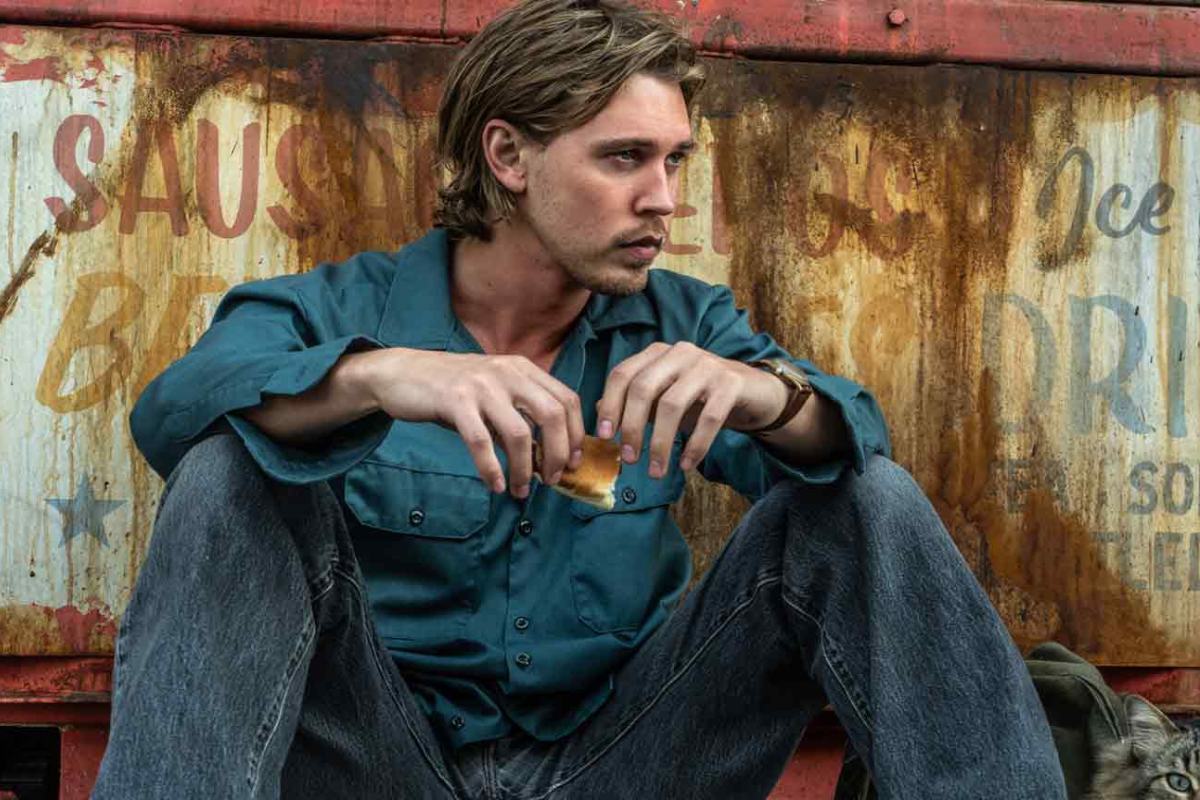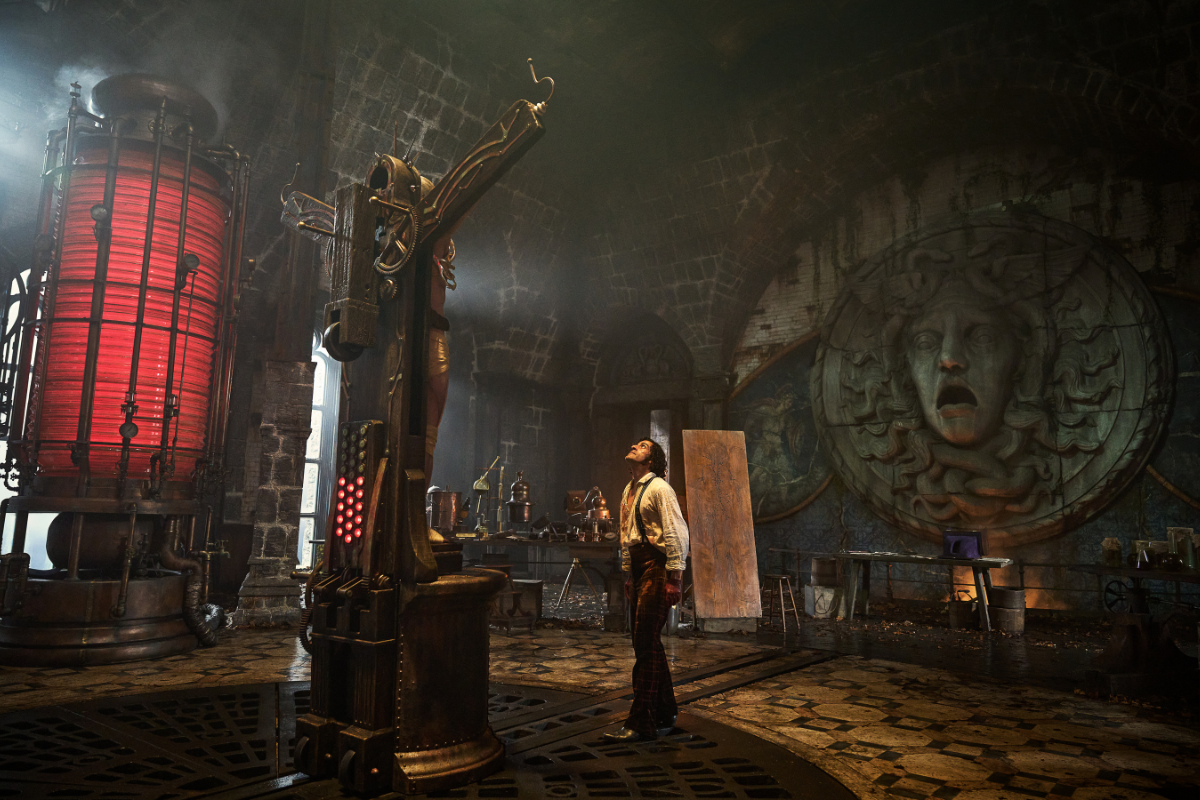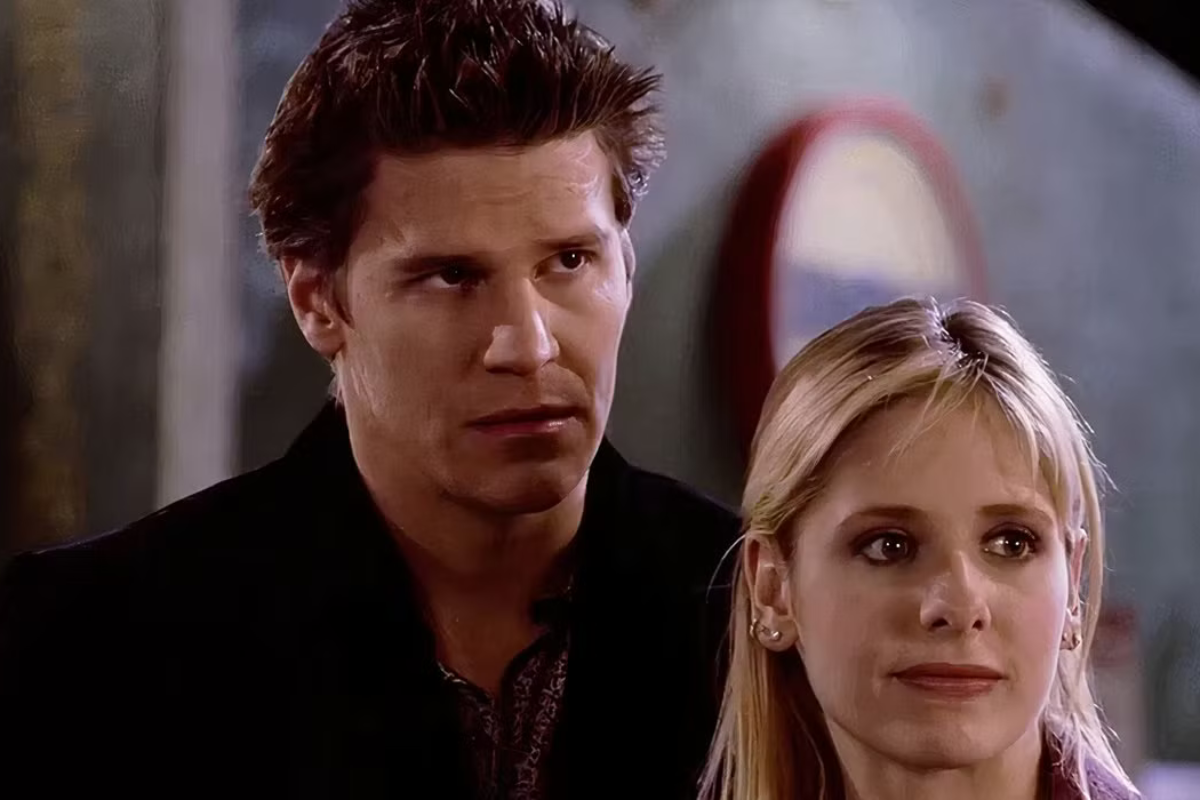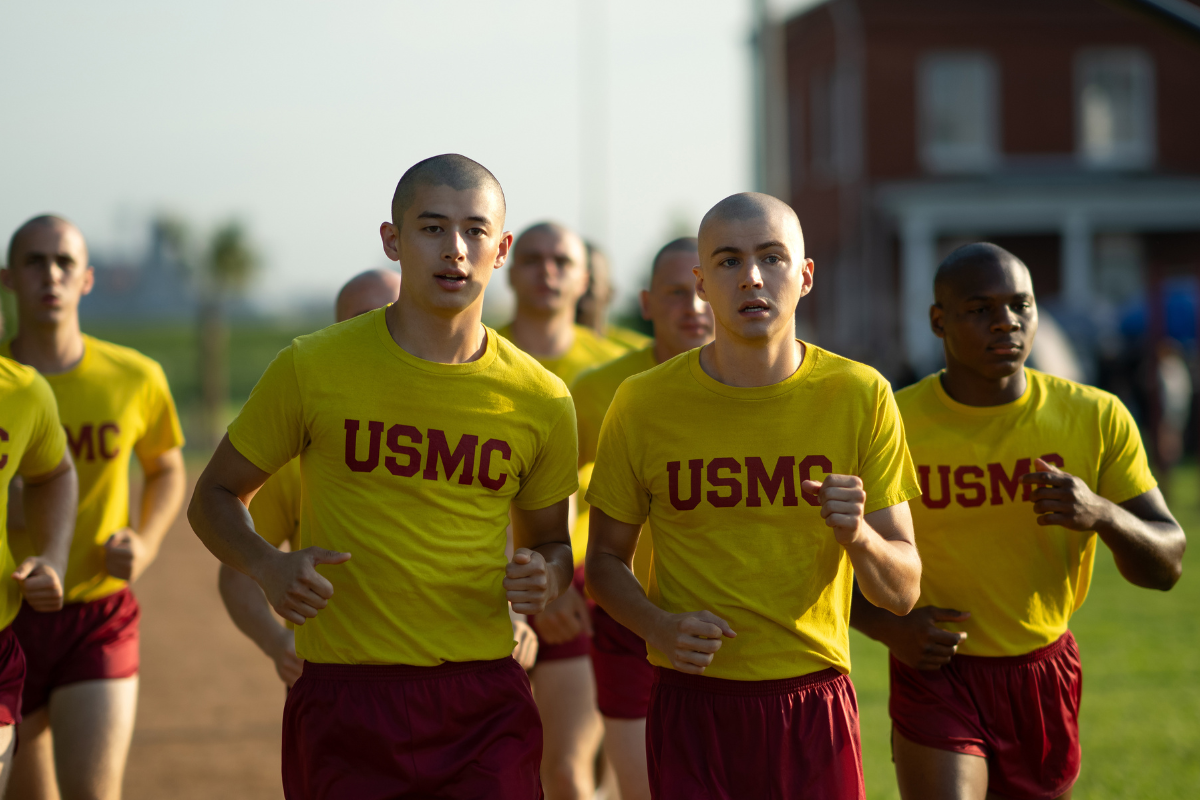Improvising Screenplays: Using the Concept of Status to Elevate Every Scene in Your Screenplay
In Improvising Screenplays, improvisational actor Brett Wean shares how the concepts of improvisation can be applied to the work — and play — of writing your script. Um… hi. Sorry…
In Improvising Screenplays, improvisational actor Brett Wean shares how the concepts of improvisation can be applied to the work — and play — of writing your script.
Um... hi. Sorry to bother you, I just... I have an article you might want to... oh, okay. Sure. I’ll wait. No, that’s no problem. I’ll just wait till you finish checking your... okay, sure, just... text her back.
Okay.
Thank you so much for making the time for me today. I really just... you’ll probably think it’s silly, but...
I wanted to talk to you about the concept of “status.”
See what I did there?
I was playing a very low-status character. Notice how I slunk into the room, kept looking nervously away from you every time we were about to make direct eye contact, nervously touched my face, and put my hands in my pockets? Those are some low-status physicalities.
Now think about what high-status people do. They tend to have great posture. Unless they’re relaxing, even in a place where someone else might feel intimidated. They might walk into the President of the United States’ office -- you know, the Oval one? -- take his chair, and put their feet up on his desk. They lead with their chests. They look you in the eyes. They don’t feel the need to speak unless they really have something to say... and their silence reverberates around the room, magnifying their power. If they are talking -- but sense that you’re not listening -- they’ll stop in mid-sentence, and then, very comfortably, wait for you to look up.
They’re calm.
Status is one of those elements that informs every scene, whether we’re aware of it or not. Often, it provides the tension that drives the scene, or transforms a mundane moment into something interesting. It provides depth, like another dimension. And it is often the key to the essential dynamic between two characters.
Status is a basic tool drilled into the heads of theatrical improvisers...and it is an essential consideration for every scene in your screenplay.
In improv workshops, coaches will often ask actors to play high or low status, then have them walk around the room, nodding to each other, making eye contact (or not), then gradually have them add words to their physical mannerisms, seeing how people interact. It’s interesting to notice how high and low status characters bounce off one another, the lower status person bowing her head and apologizing to the person she perceives as her superior.
But it can be even more fascinating to watch two high status or low status figures knock up against each other. Two incredibly confident dudes strutting up into each other’s paths, both unwilling to stand down, literally knocking their chests together. How would two high status women do battle? What interesting physical “tells” would come out? How might their voices change? (I wonder if they’d do that thing where their voice rises at the end of each sentence as though it were a question: “I kind of think you should move? Because I was here first?” “Well, I take this path every day? And, it’s just, I’ve never had a problem?”)
Conversely, two low-status people might get locked in an ironic standstill, apologizing and insisting that the other go past. (“I’m so sorry. That was my fault. I wasn’t looking where I was going. Were you trying to pass on the right? I usually go that way, but no, please, you.” “Oh, no, I insist, you go on the right. I have a big meeting I’m about to be late to, but please, you go first...”)
In your screenplay, how high or low status is your character in terms of his job position? What about in terms of social standing? More importantly -- sometimes in harmony with this, and sometimes in conflict -- how does he actually conduct himself? You could be a king with an inferiority complex. Or a jester who knows he’s the smartest person in the kingdom. The roots of character status are especially pronounced in commedia dell’arte, the 16th and 17th century character archetypes greatly defined by their exaggerated and heightened status characteristics.
Think about Meryl Streep as the Anna Wintour-like Miranda Priestly (what a great, evocative name!) in The Devil Wears Prada. One of the employees at Runway Magazine yells out that Miranda is on her way up, and everyone immediately leaps up and scatters, indicating how incredibly high status she is. There is only Miranda... and everyone else.
But once Miranda is safely ensconced in her office, the finer gradations come out: Emily Blunt -- as a high-level assistant -- lords her position over Anne Hathaway’s new girl, Andy. Yet Andy, despite her low-woman-on-the-totem-pole job position, refuses to cower to anyone, including Miranda, recognizing how arbitrary and ludicrous the worship of this “Priestly” woman is. It’s part of what ultimately forges Miranda’s respect for her, and what leads to Miranda making Andy her protégée.
Status isn’t always a matter of black and white, high versus low. A great improv coach of mine had us pick a number between one and ten, one indicating the lowest possible status, ten signifying the highest. Walking out on stage in an improvised scene, we were able to calibrate ourselves against each other. Even if the scene wasn’t overtly about status, it became an effective and useful barometer to judge how any two characters relate.
Usually no two characters are exactly the same status. Even with two best friends, one of them might be smarter, while the other is better at attracting the opposite sex. Status often shifts, depending on context.
A rare example of two completely equal-status characters is that old SNL sketch featuring Tom Hanks and Jon Lovitz as two truly pathetic Girl Watchers, mutually trying -- and failing -- to attract passing women’s attention.
Girl Watcher #1: Good evening.
[the woman walks past without even blinking]
And goooood night.
Girl Watcher #2: Yow! Not even eye contact.
Girl Watcher #1: The ladies just don't like me.
Girl Watcher #2: To say the least.
Girl Watcher #1: My face is just too wide.
Girl Watcher #2: Yeah, and my hairline can't be helping, either.
Girl Watcher #1: I'd be hurt and disappointed if it didn't happen so often.
Girl Watcher #2: Soooo true.
Girl Watcher #1: Whoa! Babe alert!
Girl Watcher #2: Oh, yes.
[the woman walks past without even blinking]
Oh, no.
Girl Watcher #1: Like we didn't even exist.
Girl Watcher #2: Completely indifferent.
Girl Watcher #1: Yes.
Girl Watcher #2: She wasn't even that attractive. But still out of my reach. A sad comment on my life.
Girl Watcher #1: Yours and mine both. The good Lord gave me this body, and there ain't no changing it now.
Girl Watcher #2: A-men!
When it comes to equal-status interactions, it’s generally to display a moment of absolute comedic agreement. (But I’m sure there are other examples: please feel free to submit some in the comments!)
For a masterful roundelay of character status interactions, watch Miller’s Crossing. (Status is often an integral element for the Coen Brothers: the flaming trashcan scene in The Hudsucker Proxy is an amazingly physicalized example of a low status peon freaking out in the presence of a superior, and one of my favorite comedic scenes of all time.) In Miller’s Crossing, Gabriel Byrne is wiser than his superior, a crime boss played by Albert Finney, and respectfully knows the true balance in their relationship. It shifts throughout the film. Watch Byrne, too, interact with the police, as well as the lower status goons employed by a rival crime boss. See how the rival crime boss interacts with Albert Finney, depending on where things stand throughout the film: respectful at first, and then competitive, challenging. You’d think the Chief of Police would hold status over the Finney character... but in the universe of this film, you’d be wrong. Everyone in Miller’s Crossing is calibrated by virtue of his or her status.
It’s also worth noting that high status characters are not always arrogant jerks. Santa Claus is high status. Nicest guy in the world... but he’s in charge.
Often, the sweet spot of your Act Three hinges on a shift in status. The higher status villain is thrust down into the depths, his power taken away, as a lower status hero finds within himself the strength to stand up to him. “No, Biff... you leave her alone,” Marty McFly’s dad, played by Crispin Glover, finally bravely demands in Back to the Future (watch that scene here).
So ask yourself: Who, in your movie, is higher status than your protagonist? Who is lower? Does your main character’s status change, depending on whether she’s at the office, at home, out with her mildly competitive friends, or at the DMV?
Great, compelling films are keenly aware of how characters relate to each other in terms of status. Take a look at your screenplay, and see what an awareness of status can do to bring out the most in your scenes... and highlight the ultimate trajectory of your main character’s journey.
Have any questions about improv, and how it relates to writing for the screen? Feel free to post comments below or send questions via Twitter. They’ll be considered for a future installment.
Related Articles:
- More Improvising Screenplays by Brett Wean
- Specs & The City: Writing Action Scenes and ‘Die Hard’
- Wendy’s LA4HIRE: Essential Ingredients to Writing a Screenplay that’s Powerful
Tools to Help:
Brett Wean is a writer and actor who has studied improvisation at New York City’s acclaimed Upright Citizens Brigade and People’s Improv Theater (The PIT), where he has taught improv as well as performing on several house teams and studying both sketch and screenwriting. He has appeared on television in various commercials, including New York Lottery’s “Little Bit o’ Luck” campaign, and most recently on MTV's Weird Vibes, and in the feature film Breakup at a Wedding, produced by Zachary Quinto’s Before the Door Pictures. Follow Brett on Twitter @brettwean


